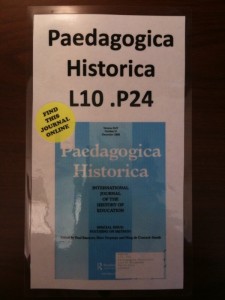i’ve followed the development of electronic resource management systems (erms) since they first began to be developed. early on it was easy to see how they *should* be designed. in 2004 i wrote an article in which i identified how a dream erms would be composed:
According to many library staff responsible for managing electronic resources, the ultimate or “dream” resource management program would perform the following functions:
1. Notify appropriate staff before licenses expire
2. Integrate with library management system to eliminate double-keying
3. Maintain current/appropriate vendor contact information
4. Track funds used to purchase resources
5. Eliminate the paper shuffling from one office to another
6. Track consortia purchases
7. Update in real time
8. Produce ad hoc reports
— Kennedy, Marie R. 2004. “Dreams of Perfect Programs: Managing the Acquisition of Electronic Resources.” Library Collections, Acquisitions, & Technical Services 28(4): 449-458.
since that article was published there has been tremendous work in developing erms to meet certain standards, and most of them now address the issues i outlined. reporting features still have a long way to go, though.
two years into my position here at loyola marymount university i lead a team to choose our new erms. we’ve selected innovative’s erms and we couldn’t be more pleased. the features i’m most excited about are: the integration with our existing library system, meaning that there is one less silo of data involved in the mgmt of electronic resources; we can push license rights and restrictions to the top level in the catalog, meaning that our users may be informed how they can use the materials; and all the juicy reports that i can pull whenever i want to.
i’ll post more later about how i composed the teams to select and implement the erms and talk through our actual selection process. for now, just know that we’re excited! we’ll be implementing the system in less than a month.




